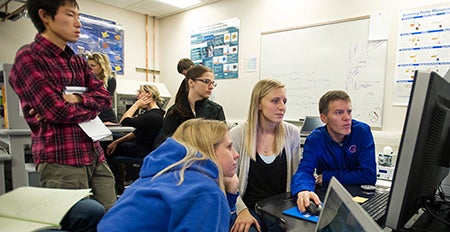
January 5, 1016 – The Surface Science Lab (SSL), part of the Nanoscale Materials and Device Group, studies materials at the nanoscale (1 nm = 1/1,000,000 mm, or nearly 100,000 times smaller than the thickness of a human hair) with the goal of understanding how a material’s composition and processing affect its surface structure and properties.
The lab is involved in a wide variety of projects, including improving the corrosion resistance properties of metals and coatings used in current and next-generation airplanes and helicopter rotors, developing a replacement for flash drives, figuring out how certain types of chemotherapy drugs work, investigating the effect of radiation on the mechanical properties of steel to facilitate safer nuclear reactors and nuclear waste storage, enabling synthesis of carbon nanotubes for environmental remediation, testing the strength and hardness of new materials (spinels) for use in ballistic protection applications such as bulletproof glass, and building structures out of DNA for disease detection, drug delivery, optical logic (i.e., doing with DNA and light what we currently do with computer chips and electrons), and other applications.